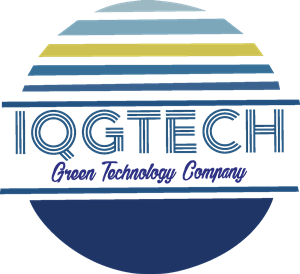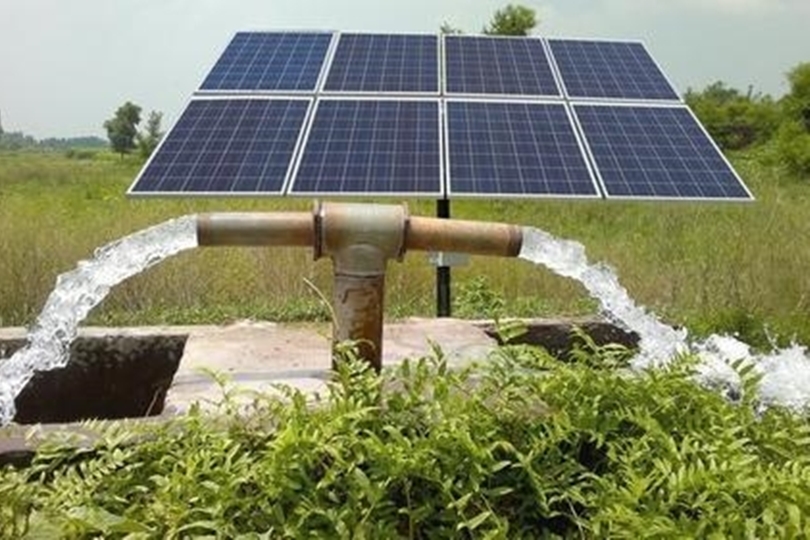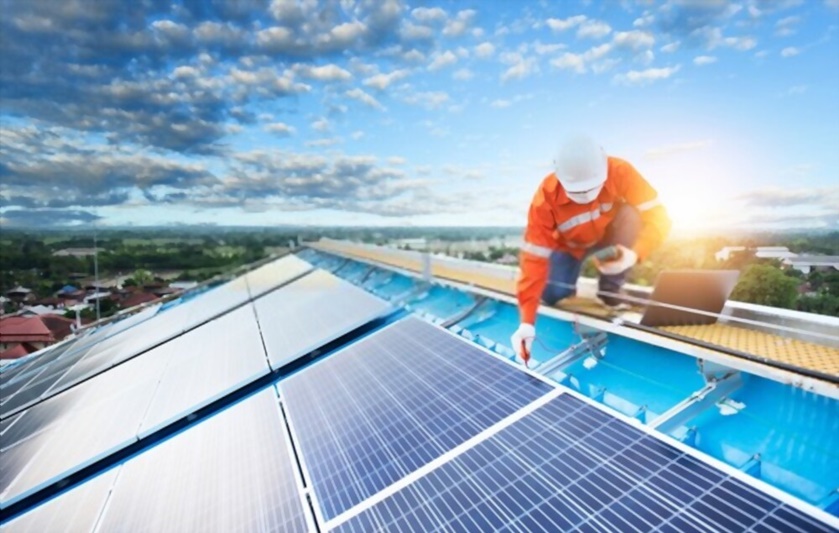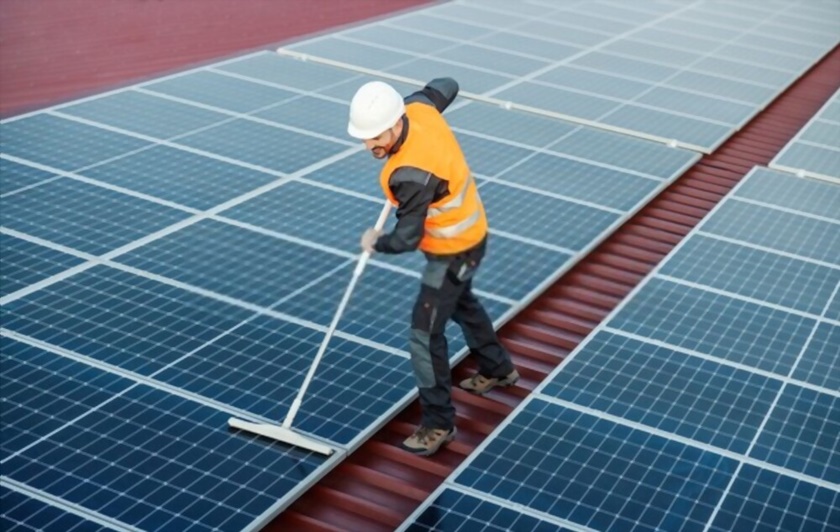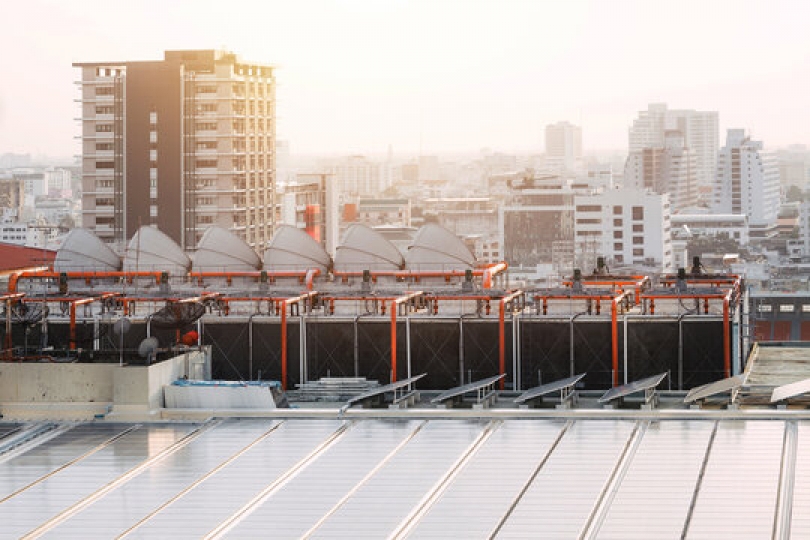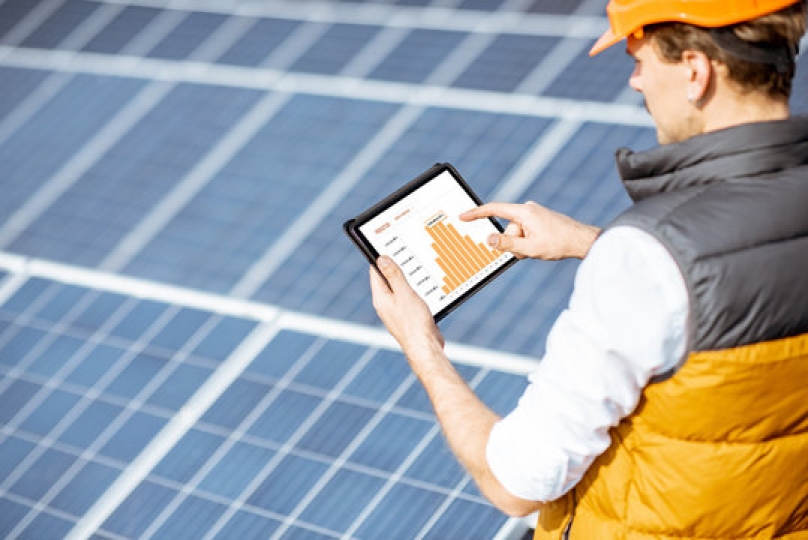Solar systems are used all over the world for the production of cheap electricity. The use of the solar system is increasing day by day. This is because the solar electricity cost is low than other sources of electricity. The solar system is used to drive different systems such as solar water pump, turbines and many other units. This article mainly focuses on the solar system and solar water pump.
What is Solar Pump?
Solar water pump is driven by the electricity produced by the PV (photovoltaic) panels or the radiant heat generated by collected sunlight. This is the opposite of a diesel or grid electricity water pump.
The solar-powered pump uses solar energy for operation. It consists of a water storage tank, electrical cables, a breaker/fuse box, a DC water pump, a solar charge controller (MPPT), and a solar panel array.
A solar-powered water pump is more efficient to operate. These pumps have low maintenance and installation costs.
Solar pumps have a lower environmental impact compared to pumps powered by IC engines or utility electricity. The pump with a solar system is a delightful technology with which remote areas can be supplied with water both ecologically and socially. Therefore, it is always the economic technology of choice.
Remote areas tend to require mostly diesel engines and human resources for water supply. Solar water pumps are replacing existing pumps and offer many benefits such as weather and socio-economy. These pumps are best suitable for reservoirs and irrigation systems.
The solar pumps utilize in places where grid power is not available, and substitutional energy sources (especially wind power) cannot provide enough power.
The solar-powered water pump can deliver water that power lines can’t reach. These are commonly found in aeration, pond filtration, aquarium filtration, and well pumps.
These types of pumps mainly use in areas that have electricity issues. Otherwise, you will not have a stable power supply. This is an ideal water withdrawal system for green energy that combines the advantages of reliability, economy, and environmental protection.
The block diagram of the solar-powered water pump mainly consists of a controller, electric motor or battery, water pump, and solar panels (PV).
Basically, the solar is an electric pump that works on the electrical energy obtained from solar panels. These panels receive energy from the sunlight. The connected battery or motor controls DC or AC. The controller used this system uses to adjust the speed and output power.
Working Principle of Solar Water Pump
A solar pump works on the base of the photovoltaic principle. During the working of a solar pump, PV (photovoltaic) systems absorb radiant solar energy and transform it into electricity. This produced electricity supplies to the entire system.
The inverter of the pump converts the direct current output of the PV system into alternating current, which drives the pump. These inverters also adjust the output frequency and voltage in real-time, corresponding to variations in the sunlight intensity to attain the highest power point tracking.
As the intensity of the sunlight becomes weaker, the water lifting system realizes the function of switching the municipal power that works as auxiliary energy for the water lifting system.
Solar-powered Water Pump Types
Solar pumps have many types, but the major types are given below:
- Submersible Solar Pump
- Surface Solar Pump
- DC Solar Pump
- AC Solar Pumps
1) Submersible Solar Pumps
Submersible pump lifts up to 650ft of water and can install in large wells. As long as the well water is more than 20ft above the surface, these pumps operate directly to turn off batteries, solar panels, and in some cases, electricity.
When the sun is shining, the pump pumps the water during the entire day, and water is stored in tanks to be used when needed. The water can’t be pumped in bad weather because the sun can’t shine in bad weather. Therefore, it is advisable to store the water only in good climate conditions.
so use for livestock watering, pond aeration, home water systems, irrigation, pressurization, and well pumping. The maximum recommended pump depth is 50m.
Read Also: Different Types of Pumps
2) Surface Solar Pumps
These types of pumps use in streams, storage tanks, shallow wells, or ponds. When the well water supply depth is 20ft or less from the ground, we use a surface solar water pump.
In general, these pumps cannot pump very high water from deep wells and can pump water up to 200ft or more. These pumps can easily lift water from depths of up to 20m.
3) DC Solar Pump
This pump has an electric motor that uses DC. Therefore, no battery or inverter is required in this pump.
4) AC Solar Pumps
The electric motor used in this type of pump works with alternating current. With the help of an inverter, the direct current produced by the switchboard is converted into alternating current. This conversion can lead to power outages during production and use.
Components of Solar Water Pump System
The solar system has the following major parts:
- Water Pump
- Solar Panels
- Batteries
- Pump Controller
- Inverter
1) Water Pump
A water pump is an important part of a water pumping system. These pumps have various types such as sump pump, booster pump, circulating pump, and submersible pump.
- Submersible Pump: The submersible pumps pump water from deep depth, e.g., underground water sources such as shallow wells and boreholes.
- Circulator Pump: These pumps circulate the water to keep it warm and prepared for utilization and ensure a continuous water supply.
- Booster Pump: The booster pump provides the pressure needed to pump water from a storage tank and deliver it to the entire home or facility.
2) Solar Panels
Solar panels are a key part of the solar-powered water pump. A group of solar panels is called an array. Solar panels generate electrical energy by separating electrons from atoms by permitting photons and light arrays, which creates electricity.
Solar panels are made up of small units called solar cells that change sunlight into electrical energy. There are several types of solar energy technologies like concentrated solar energy and solar thermal. These work differently than PV solar panels. However, these also use the energy of sunlight to generate electricity to drive water pumps.
3) Solar Batteries
The battery of the solar powered water pump system stores the charge produced by the solar panel; in the presence of sunlight, the energy produced by the solar panel supplies to a load and a battery.
If the load requirement is greater compared to the energy obtained by the solar panels, these batteries deliver a stable source of energy to the pumping system. The battery ensures that the water pumping system is working in the sunlight or not.
Deep cycle batteries often use for solar energy purposes because they are repetitively and deeply discharged.
4) Pump Controllers
The pump controller can adjust the pump system parameters to meet user needs and shield the pump system. These can use for the water to set an extraction schedule. The scheduled water helps to maximize the pump life.
5) Inverters
The inverter converts DC into AC. The transformation of direct current to alternating current is required for a wide variety of electrical equipment involving water pumps. Therefore, the inverter is an important part of the solar water pump system. But, using a DC pump removes the need for an inverter.
In cloudy or dark weather, the inverter becomes a high-performance backup source of energy; due to that, the pump can continue to run without solar energy or sunlight.
How to buy an efficient solar water pump?
The prices of solar water pumps have decreased in recent years. The following are the factors that should be considered while purchasing a solar water pump.
- Economics
- Social justice
- Water management
- Standardization of products and services as well as quality control
- Money accessibility
- Maintenance
- Operation and installation.
With these factors in mind, solar pumps can offer tremendous socio-economic and environmental advantages at the national and agricultural levels. This technology can provide reliable power to control areas at the farm levels, particularly areas that aren’t linked to the electricity grid or where supplies of traditional liquid fuel are rare.
At the national level, solar pumps help diversify, stabilize and increase agricultural production, which is the economic base of most African countries.
As the name suggests, an efficient solar pumping system is a system that can absorb a lot of sunlight and is specially installed for the necessities of the farm.
Nowadays, due to the world’s energy crisis, the world is energetically developing renewable energies. Despite the relatively high cost, the actual efficiency of a solar-powered system can be seen over the years. Using solar energy is a valuable option as a renewable energy option.
Solar Water Pump advantages and disadvantages
Solar pumps have the following advantages and disadvantages.
Advantages of Solar Pump
- The solar pump has an easy installation.
- It requires less maintenance.
- It has low operating costs.
- Solar systems work without fuel.
- Solar water pumps are easy to move.
- It does not require regular utility power.
- It can also use in remote areas.
- These pumps have high durability and performance.
- They have Strong design.
- Long service life
- These have easy maintenance and use.
- Simple installation.
- These are environmentally friendly pumps.
Disadvantages of Solar Pumps
-
- It has a high price.
- The solar water pump system requires a water storage tank and battery.
- The output of solar panels varies on the weather conditions.
- They supply quality water.
Solar Pump Applications
The major applications of solar pumps are given below:
-
-
- These pumps use to supply water to animals
- They use for irrigation systems
- They also use to supply water for drinking and cooking purposes
- These pumps may also utilize as booster pumps for pumping fluids over long distance
- Solar pumps use for water treatment applications
- These also use for the extraction of oil and gas
